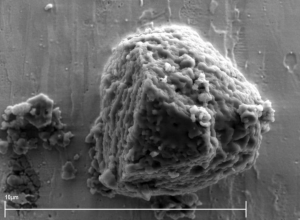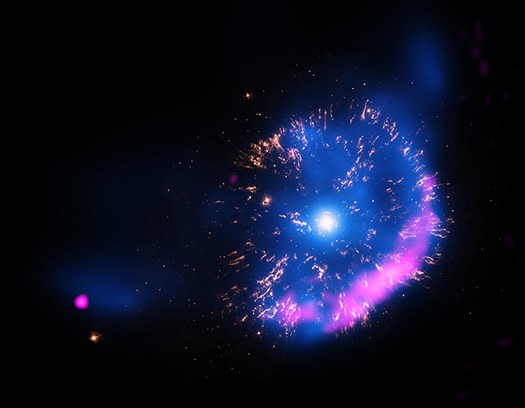Certain types of primitive meteorites contain micrometer-size dust grains with isotopic compositions vastly different from those of any other matter found in the solar system. The only viable explanation for their existence is that they condensed in stellar winds or the ejecta of exploding stars. These tiny grains survived the journey through the interstellar medium to the region in which our solar system formed about 4.6 billion years ago. Most analyzed grains originate from supernovae and asymptotic giant branch stars. An example of a silicon carbide (SiC) stardust grain is shown in the first image. The grain’s diameter is less than 10 micrometers.
Classical novae are prolific dust producers, but no presolar stardust grains from these exploding binary stars have been unambiguously identified yet. A major problem with previous studies was the limiting computing power when trying to reproduce the observations on large computers. The small number of simulations performed implied a poor exploration of the large classical nova parameter space. An example of a classical nova is shown in the second image. This nova is called GK Persei and is about 1,500 light years away.
A team of U.S.-Spanish researchers, led by UNC’s Christian Iliadis, pursued a different strategy, based on a Monte Carlo (statistical) technique, that involves the random sampling over the most important nova model parameters: the white dwarf composition; the mixing of the outer white dwarf layers with the accreted material before the explosion; the peak temperature and density; the explosion timescales; and the possible dilution of the ejecta after the outburst. The new simulations were based on a unique library of thermonuclear reaction rates, which is maintained by the UNC group. The new computer simulations have identified, for the first time, 18 presolar stardust grains that likely formed directly in classical nova explosions before the solar system formed 4.6 billion year ago. The results have recently been published in The Astrophysical Journal. This work is supported by a research grant from NASA.



